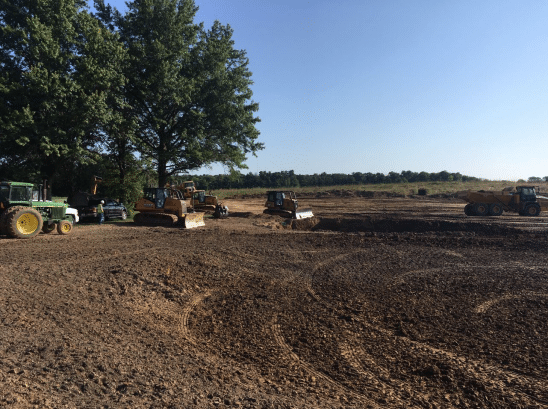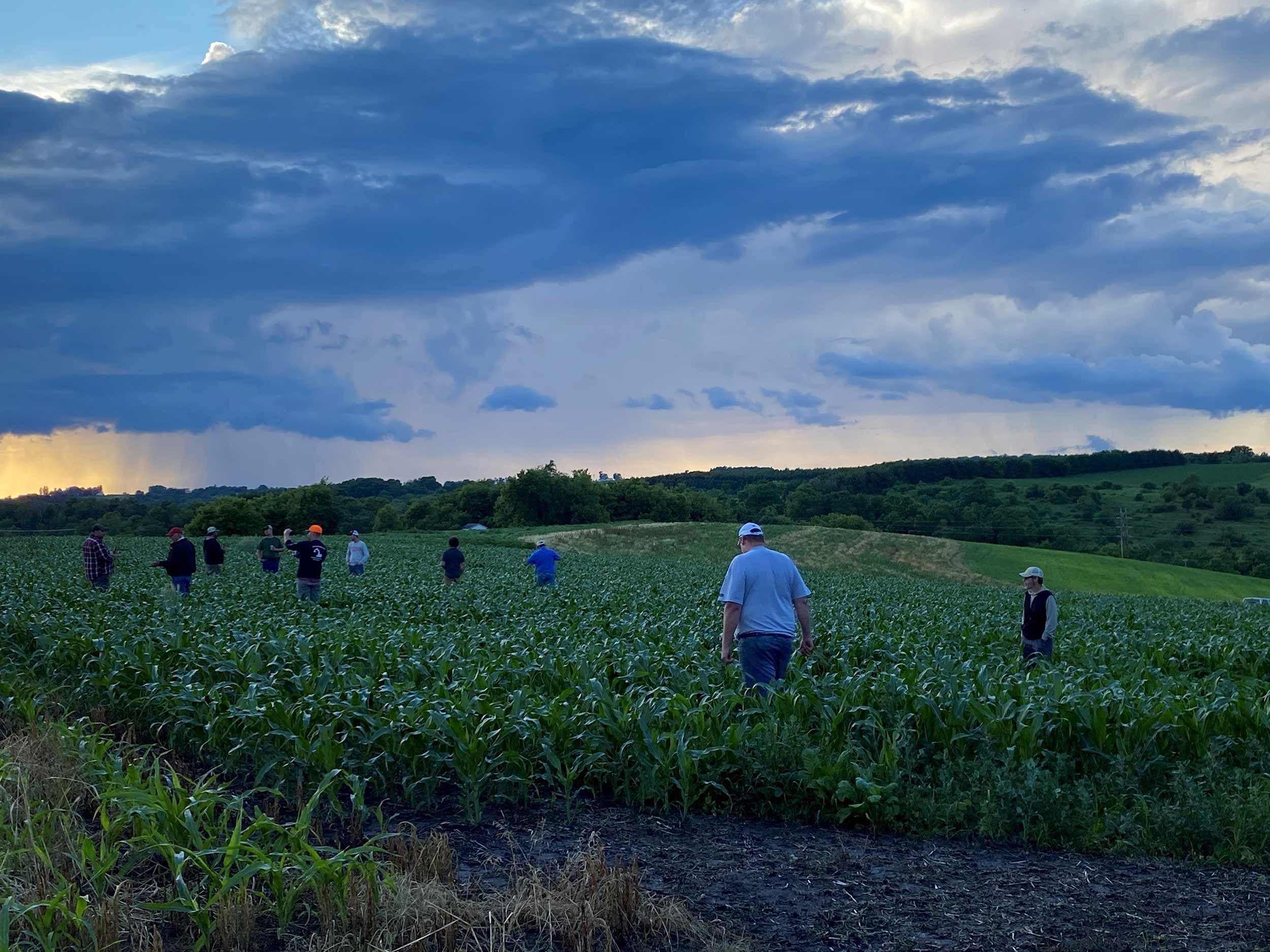Funded Project
2023| Conservation Drainage in Illinois

Contact
Applicant Organization: Agricultural Drainage Management Coalition
Contact: Keegan Kult
Email: keegankult@gmail.com
Project
In 2020, Conservation practices in farmlands surrounding the Vermillion headwaters in Illinois had slowed to a crawl. While many farmers were initially willing to implement ways to improve drainage, neighbors in Iowa had experienced setbacks with bioreactor and saturated buffer installations when the state first dedicated resources, only to have to wait 2-3 years for approved plans due to a lack of experience getting private designs to meet NRCS standards. Farmers and landowners in the region were disheartened by delays and were unsure if the benefits of conservation practices would justify their investments.
For over a century, Midwest farmers on the Vermillion have relied on subsurface drainage to boost productivity and mitigate risks, but this practice has a downside: it channels dissolved nutrients like nitrates and ortho-phosphates into nearby streams and lakes, threatening local fisheries, drinking water supplies, and even contributing to hypoxia in the Gulf of Mexico. Exciting new advancements in conservation drainage practices offer a solution, working in harmony with existing systems to sustain productivity while curbing nutrient runoff. Despite these promising developments, adoption has lagged due to unfamiliarity among farmer advisors and the inefficiency of practice delivery processes.
Undeterred by these growing pains, the Agricultural Drainage Management Coalition believed they could revitalize the watershed by increasing adoption of sustainable agricultural drainage practices. The group committed to review bottlenecks and identify solutions of the design, approval, and installation process. The ADMC worked with its partners to use Fishers and Farmers Partnership 2023 Aquatic Habitat funding to develop the infrastructure to deliver conservation drainage in Illinois, especially to past participants still needing practice installations that met NRCS approval. Eligible practices include bioreactors, constructed wetlands, drainage water management, multi-purpose oxbow restoration, and saturated buffers. Priority was given to sites within the Upper Mississippi Basin, with a focus on Indian Creek-Vermillion River and the Larger Vermillion Watershed.
The initial project aims to revolutionize conservation drainage across Illinois, sparking a wave of sustainable practices statewide. Despite significant advancements, adoption has been sluggish. To tackle this, the project will spotlight pioneering farmers who lead the way in conservation, underscoring the immense value and importance of sustainable agriculture. Videos and profiles showcasing farmers pioneering sustainable practices, along with their advisors and contractors, will be prominently featured on the Illinois Sustainable Ag Partnership (ISAP) website and disseminated through e-newsletters, inspiring others to join the movement and embrace these essential changes.
Among various project sites, Keegan Kult, the project coordinator, is particularly enthusiastic about the canary grass lowland, a wetland area along the riverbank that had been overwhelmed by invasive canary grass. Rather than resort to burning or herbicides, the ADMC adopted an innovative approach. They observed which plant species were thriving in the watershed and strategically planted patches of resilient native species to attract pollinators and birds. Over time, the progress of each patch is closely monitored to determine which ones are flourishing and gradually pushing back the invasive canary grass. Remarkably, these patches can even be seen on Google Earth. Keegan emphasizes, “We’ll be tracking the success of those patches as the project progresses.” The strategic planting represents a novel approach to reclaiming land that has been overrun by non-native species.
The project's next phase focuses on outreach and education for landowners and farmers along the Vermillion River. The goal is to promote conservation initiatives and to offer guidance on enhancing habitat and water quality on their own properties. Each stakeholder will receive an invitation to a landmark field day scheduled for 2025, an opportunity to enjoy the 10 acres of beautifully restored prairie along the watershed. Experiencing a live demonstration of successful conservation practices in action will inspire others to participate, contributing to the overall improvement of watershed health in Illinois.
Successful projects are built on strong relationships, and the Agricultural Drainage Management Coalition has been fortunate to collaborate with many watershed groups, including the Fisher and Farmers Partnership.

